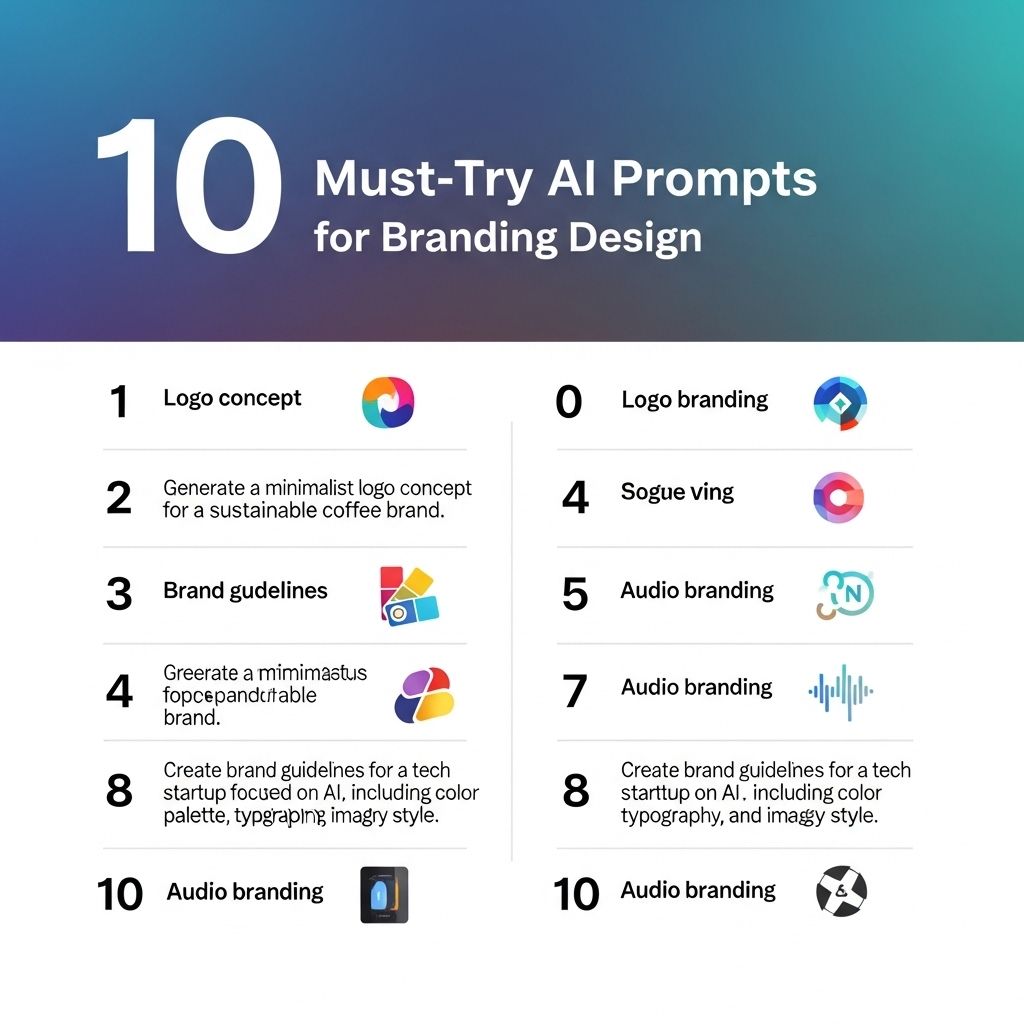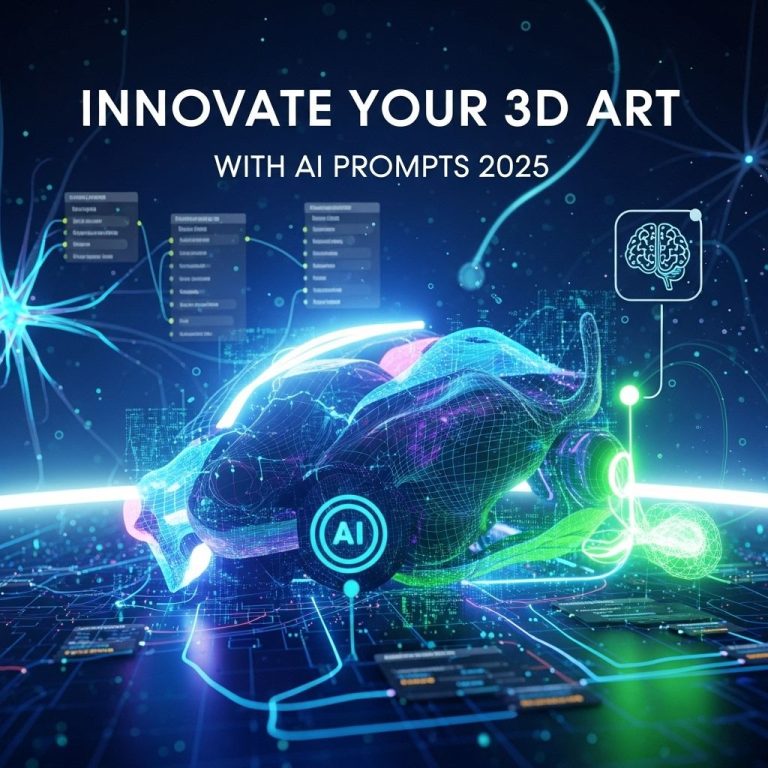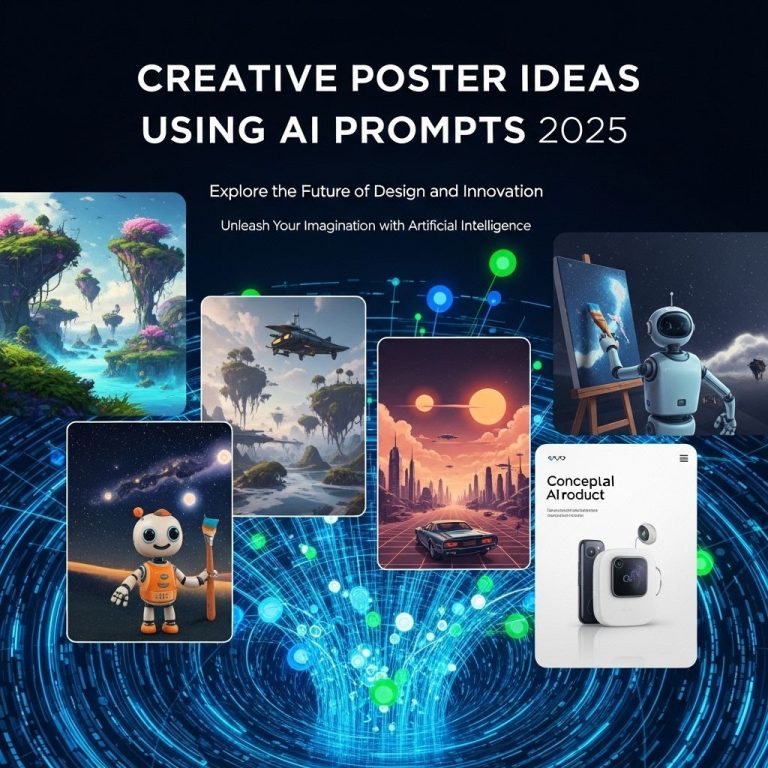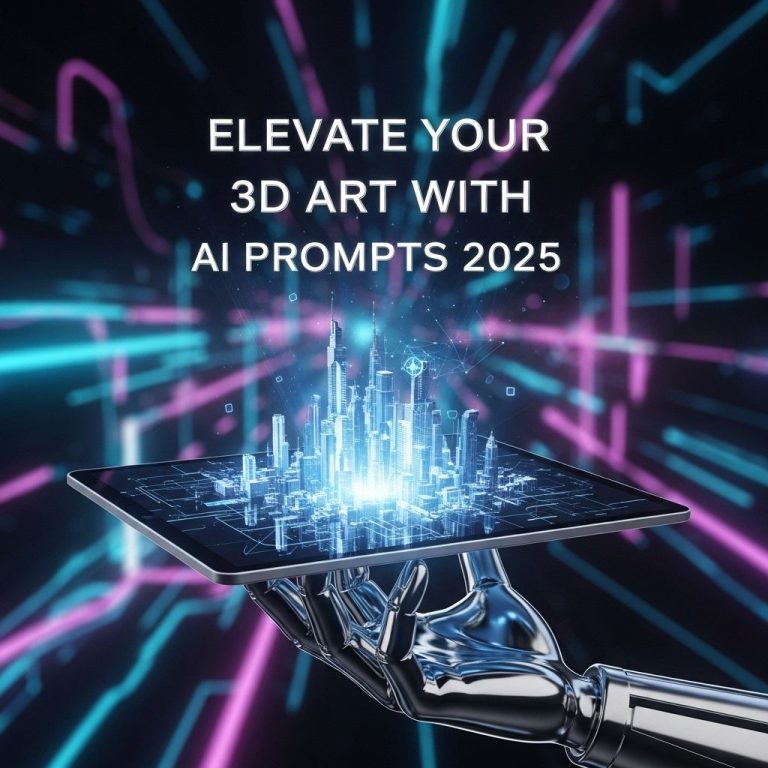In today’s fast-paced digital landscape, branding is more than just a logo—it’s about creating an identity that resonates with consumers. As artificial intelligence continues to evolve, designers are presented with new opportunities to enhance their creative processes through innovative AI prompts. This article delves into 10 essential AI prompts that can help elevate branding designs to new heights, providing practical examples and tips for implementation.
The Importance of AI in Branding Design
Artificial intelligence has revolutionized the way designers approach branding. With its ability to analyze vast amounts of data and identify trends, AI can provide valuable insights that enhance creativity and efficiency. Here are a few key advantages of integrating AI into branding:
- Data-Driven Decisions: AI can analyze consumer behavior and preferences to deliver insights that inform design choices.
- Enhanced Creativity: By generating unique ideas and concepts, AI can inspire designers to think outside the box.
- Time Efficiency: AI tools can automate repetitive tasks, allowing designers to focus on more strategic and creative aspects of their work.
Top 10 AI Prompts for Branding Design
Here are ten must-try AI prompts that can help you create impactful branding designs:
1. Generate a Color Palette
Many brands struggle with selecting the right colors that evoke emotion and align with their values. Use an AI tool to generate a color palette based on keywords associated with your brand identity.
2. Create Logo Variations
Utilize AI to generate multiple logo concepts based on your initial design. Input parameters such as style, color, and elements to explore diverse iterations that capture your brand essence.
3. Design Social Media Graphics
AI can help suggest templates and layouts tailored to your brand’s aesthetic for social media graphics. You can input content themes and audience demographics to get optimized designs.
4. Develop Brand Storytelling
Engaging narratives are crucial for brand connection. Use an AI writing tool to create compelling brand stories by inputting key moments and values of your brand.
5. Analyze Competitor Branding
AI can analyze competitors’ branding strategies, providing insights on their strengths and weaknesses. Generate a report using competitor logos, color schemes, and messaging to identify areas for differentiation.
6. Craft Taglines and Slogans
Input your brand values and target audience into an AI tool to brainstorm taglines and slogans that resonate with consumers. This can be an excellent way to capture the essence of your brand succinctly.
7. Visualize Brand Personas
Create visual representations of your target audience using AI. By inputting demographics and psychographics, you can generate images that represent your ideal customers for branding campaigns.
8. Generate Marketing Material Layouts
AI can suggest layouts for brochures, flyers, and other marketing materials based on your branding style. Input your content and see how an AI tool arranges it for maximum impact.
9. Explore Typography Options
Typography plays a vital role in branding. Use AI to suggest font pairings based on your brand style. Input keywords like ‘modern’ or ‘elegant’ to receive typography recommendations.
10. Create a Brand Style Guide
As your brand evolves, maintaining consistency is crucial. Utilize AI to compile a brand style guide that covers color usage, typography, logo variations, and tone of voice, streamlining the onboarding of new team members or partners.
Implementing AI Prompts in Your Design Process
To effectively incorporate these AI prompts into your branding design workflow, consider the following tips:
- Start Small: Experiment with one or two prompts at a time to gauge their impact on your design process.
- Combine Human and AI Creativity: Use AI-generated suggestions as a starting point but don’t forget to add your personal touch.
- Evaluate Results: Analyze the effectiveness of AI-driven designs through A/B testing with your audience.
Conclusion
Incorporating AI into branding design opens up a world of possibilities. These ten must-try prompts can help you create a distinctive brand identity that stands out in today’s competitive market. By blending technology with creativity, designers can not only streamline their processes but also push the boundaries of innovative branding.
As you adopt these tools and techniques, remember that the key to successful branding lies in authenticity and connection with your audience. Embrace the power of AI while ensuring that your brand’s unique voice and values shine through.
FAQ
What are AI prompts for branding design?
AI prompts for branding design are specific cues or instructions given to AI tools to generate creative ideas, concepts, or designs that align with a brand’s identity and goals.
How can AI prompts enhance my branding design process?
AI prompts can streamline the branding design process by providing innovative ideas, reducing the time spent on brainstorming, and offering unique perspectives that you may not have considered.
What types of AI prompts should I use for logo design?
For logo design, consider prompts that specify the brand’s values, target audience, and desired style. For example, ‘Generate logo concepts for a sustainable fashion brand targeting millennials.’
Can AI prompts help in creating brand color palettes?
Yes, AI prompts can assist in creating brand color palettes by suggesting combinations based on psychological color theories and the emotions you want to evoke in your audience.
Are AI-generated branding designs copyrightable?
The copyrightability of AI-generated designs can be complex; typically, it depends on the extent of human input in the design process. It’s advisable to consult legal expertise for specific cases.
How can I evaluate the effectiveness of AI-generated branding designs?
Evaluate the effectiveness of AI-generated designs by considering factors such as brand alignment, audience appeal, uniqueness, and how well it communicates the brand’s message.




